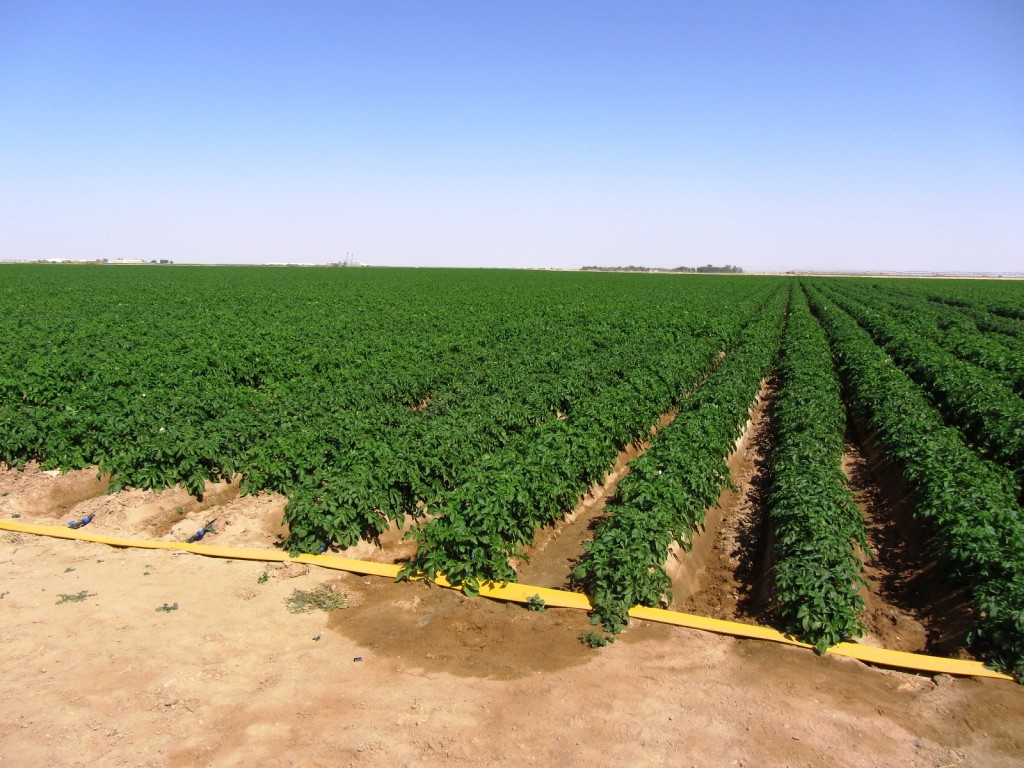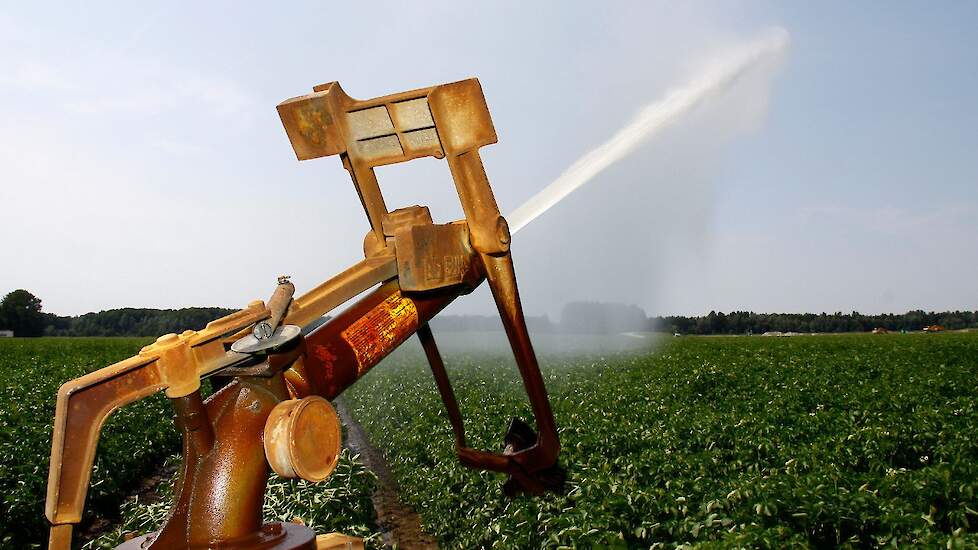Comparative scientific research by the Delphy advisory service in 2020 showed that experimental fields with irrigation yielded 3000 kilos of extra starch per hectare, compared to test fields without irrigation.
Low budget drip irrigation resulted in more than 1,600 kilos of extra starch per hectare. The research that took place on a plot of good valley soil in 1e Exloërmond in Drenthe also served to find out why starch potatoes die faster when they are irrigated. However, this turned out not to be the case in the year under review, quite the contrary. The irrigated test fields remained green for the longest time. The study also assessed the usefulness of soil moisture sensors to support the decision when and how much water to apply.
Water quality and drip irrigation

In addition, the tests made a distinction between water quality. Test fields irrigated with tap and surface water yielded more starch per hectare than the test fields that were sprinkled with iron-containing water or water with an increased salinity. But the results were not significant. Four times with a 25 mm dose each time the irrigation was carried out on the dates 3 July, 22 July, 30 July and 9 August. Drip irrigation was also turned on on these days, adding 15 mm of water at a time. This took more time than irrigation with the reel. The snakes had been laid on the ground between the backs. To save costs, not in every row but in every second row. The costs of this system per hectare are approximately 400 Euro per hectare.
11,000 kilos of starch per hectare with irrigation
The test fields that were moistened in this way yielded converted 9338 kilos of starch per hectare. The non-irrigated test fields reached no more than 7695 kilos of starch per hectare, while the test fields irrigated with surface or tap water yielded more than 11,000 kilos of starch per hectare.
The research commissioned by BO Akkerbouw is partly funded by the Northern provinces and will run for three years up to and including 2022. In addition to repeating the existing trial set-up, which can be adjusted based on the experiences gained, the research may be accompanied by additional drip irrigation objects. With the aim of investigating how the return can be improved.

